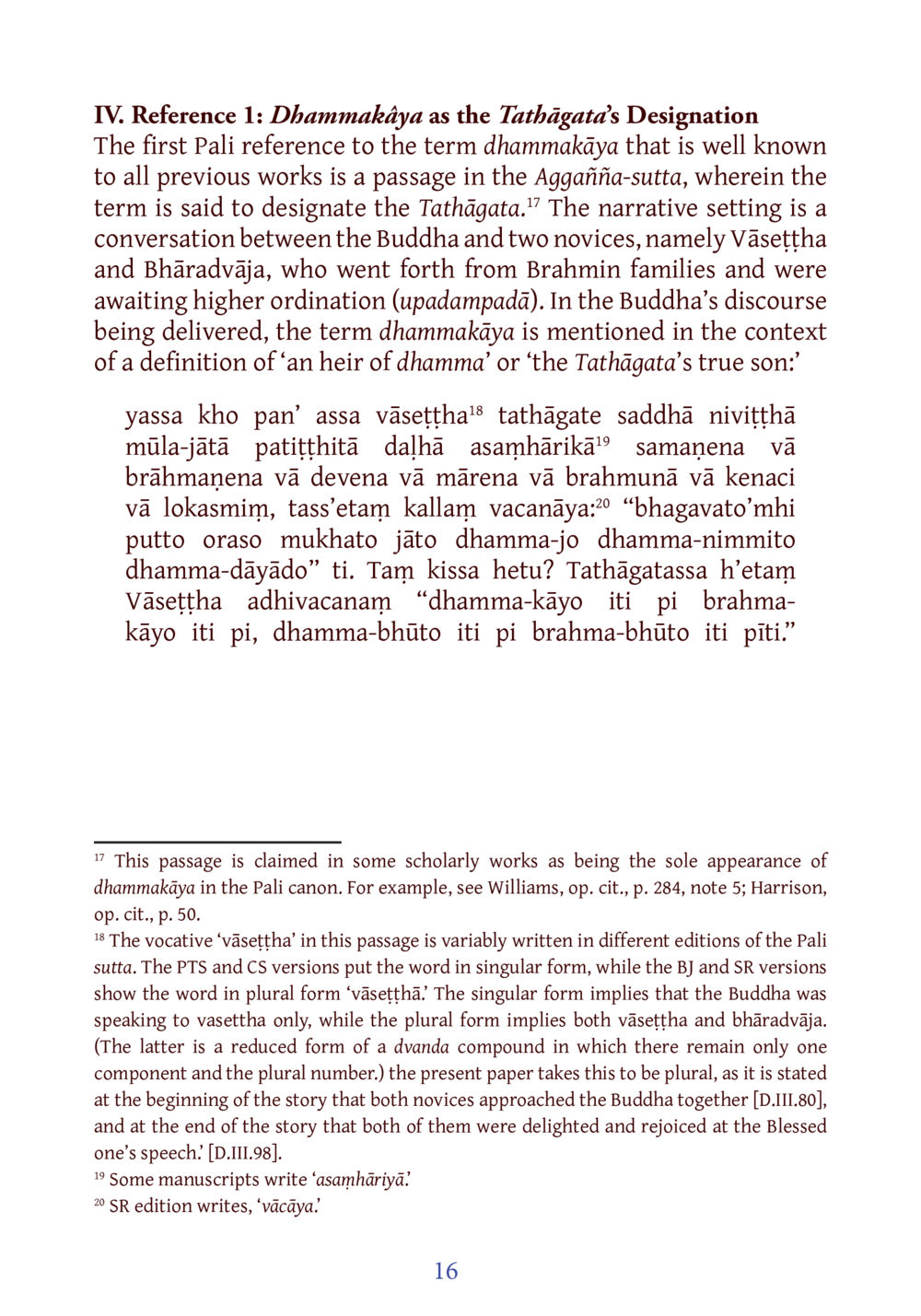Exploring the Concept of Dhammakāya in the Aggañña-sutta : หน้า 37/141
DIRI Journal : หน้า 37/141 A detailed examination of the term dhammakāya and its significance as the Tathāgata's designation in Pali scriptures.
0 ครั้ง

สรุปเนื้อหา
This text discusses the term 'dhammakāya' as referenced in the Aggañña-sutta, emphasizing its importance in defining an heir of dhamma and the Tathāgata’s true son. The conversation between the Buddha and novices Väsetṭha and Bhāradvāja provides insights into the understanding of dhamma and the spiritual lineage of the Tathāgata. It highlights variations in manuscript editions regarding the address to Väsetṭha and explores scholarly interpretations of the passage, noting its unique occurrence in the Pali canon. The text underlines the significance of faith and the connection to dhamma through the dhammakāya.
หัวข้อประเด็น
-Dhammakāya in Pali texts
-Aggañña-sutta analysis
-Buddhist definitions of heirship
-Väsetṭha and Bhāradvāja's role
-Scholarly interpretations of the term
ข้อความต้นฉบับในหน้า
หน้าหนังสือทั้งหมด













































































































































